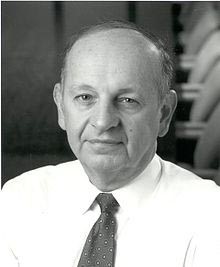George H. Heilmeier
George H. Heilmeier

George H. Heilmeier earned his BS in electrical engineering from the University of Pennsylvania and his MSE, MA, and PhD in solid state materials and electronics from Princeton University. Heilmeier is internationally recognized for his pioneering work on electro-optic effects in liquid crystals, performed at RCA Laboratories in Princeton, and his subsequent demonstration of the first working liquid crystal display (LCD). He was named Head of Solid State Device Research there in 1967.
In 1970, Heilmeier was chosen as a White House Fellow to work on research, planning, and technology assessment for the Secretary of Defense. The following year, he was named Assistant Director of Defense Research and Engineering, in charge of all Department of Defense programs in electronics, computer technology, and physical sciences. In 1975, he became the Director of the Defense Advanced Research Projects Agency (DARPA), where he managed projects including stealth aircraft, lasers, and artificial intelligence. While working for DARPA, he was twice awarded the Department of Defense Distinguished Civilian Service Medal, the highest civilian award given by the department.
Heilmeier left DARPA in 1977 to join Texas Instruments. He was appointed Vice President of Corporate Research, Development, Engineering, and Strategic Planning in 1978 and was named Senior Vice President and Chief Technical Officer in 1983.
In 1991, Heilmeier was elected president and CEO of Bellcore, formerly Bell Communications Research. He later focused on coordinating efforts to develop a national information infrastructure that he said would bring interactive media into users’ homes by linking telephones, computers, and television to produce video, sound, and data.
Over the course of his career, Heilmeier earned 15 patents and received numerous awards, including the National Academy of Engineering Founders Award (1991), the National Medal of Science (presented by President Bush in 1991), the John Scott Award for Scientific Achievements from the City of Philadelphia (1996), the IEEE Medal of Honor (1997), the Edwin H. Land Medal (2006), and the John Fritz Award (1999).
He passed away in 2014.
Document Created: 26 July 2023
Last Updated: 03 December 2024
